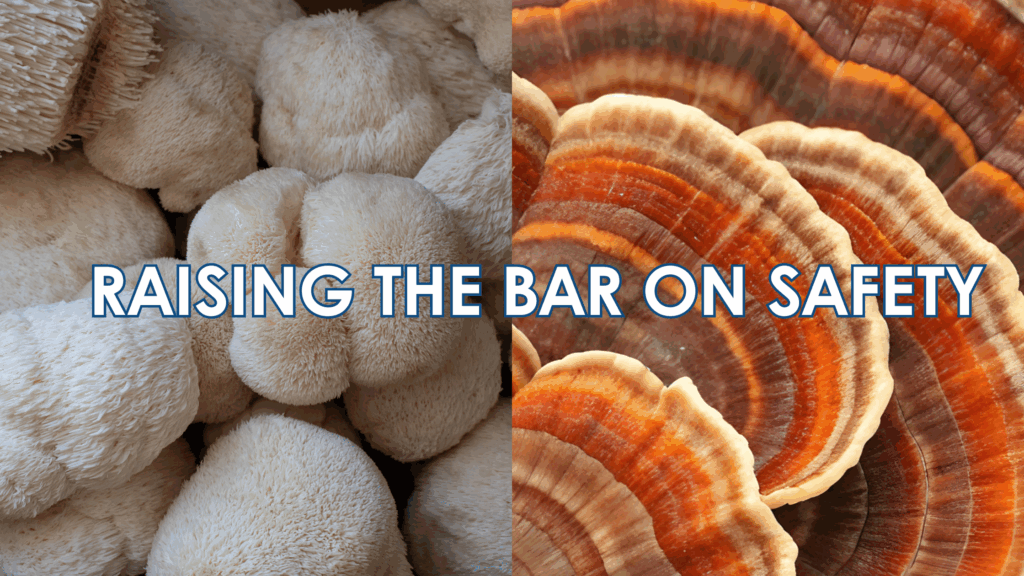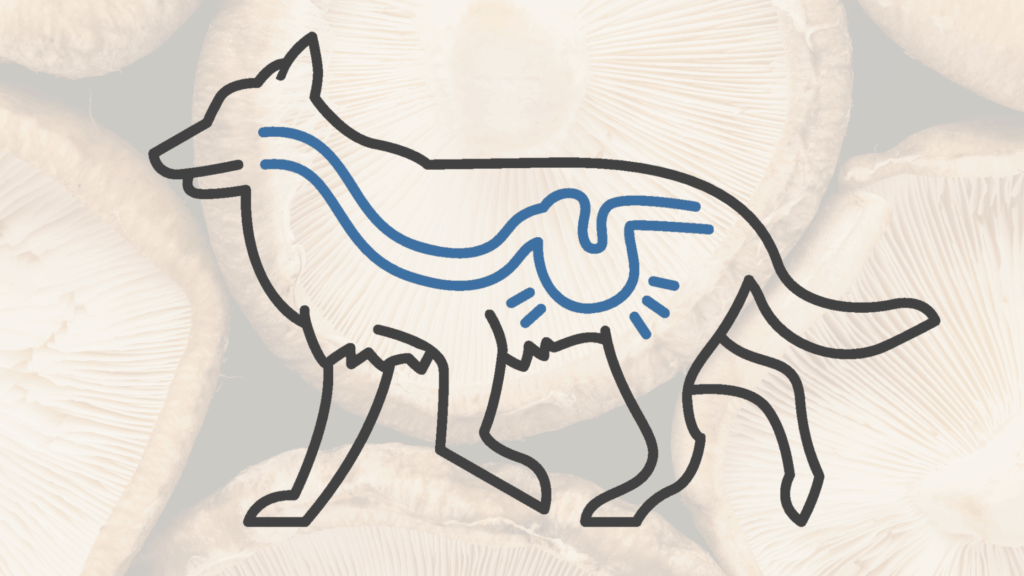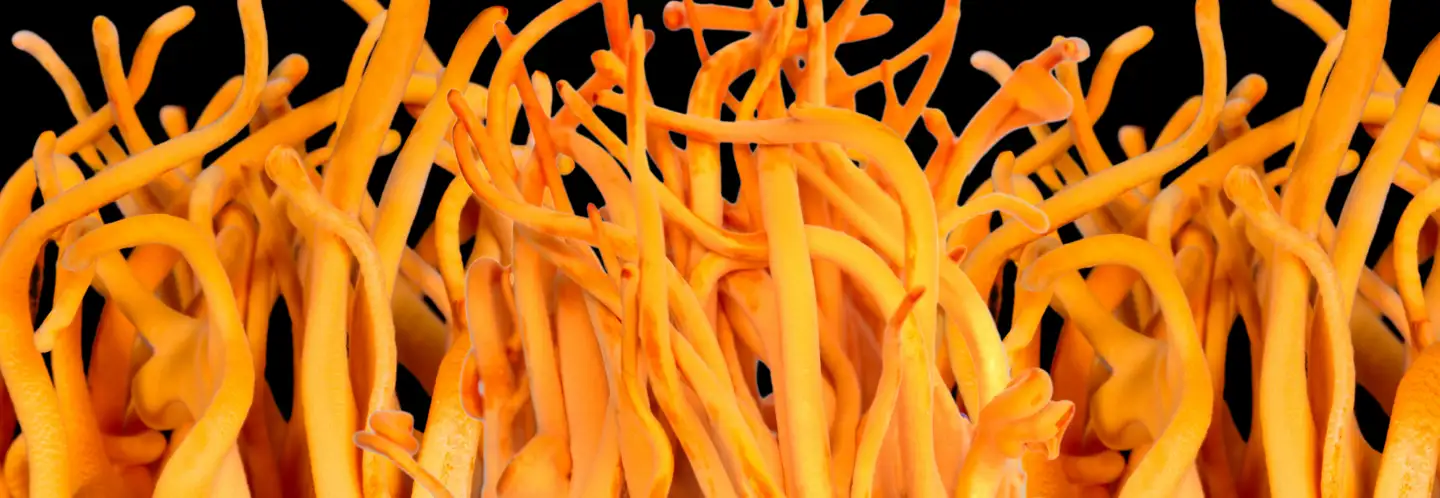By: Robert Dale Rogers, Clinical Herbalist, Scientific Advisor, and author of 60 books including “The Fungal Pharmacy” and Steve Farrar – M2 Ingredients Co-Founder, Mycologist
As functional fungi gain wider recognition, a growing debate has emerged over what constitutes “real” Chaga. While some maintain that only wild-harvested material is truly authentic, a closer examination of biology, biochemistry, and—most importantly—clinical research reveals a more nuanced and progressive picture.
The reality is this: wild-harvested and organically cultivated Chaga are biologically distinct. But “different” does not mean “inferior.” In fact, when grown under controlled conditions, cultivated Chaga may offer more consistent, sustainable, and clinically validated health benefits than its wild counterpart.
What Is Chaga, Really?
STEVE FaRRAR, MYCOLOGIST
Wild Chaga (Inonotus obliquus) is not a mushroom in the conventional sense. It is found in nature as a sterile conk—a dense, charred-looking mass formed on birch trees in boreal forests. This conk is composed of both fungal and host tree tissues, a distinction that becomes critical when evaluating Chaga’s composition and functionality.
Wild-Harvested Chaga: Primarily Tree Tissue, Not Pure Fungus
Chemical and microscopic analyses show that wild Chaga consists of roughly 90% woody plant material—a pathological response by the birch tree to fungal infection. Over time, I. obliquus mycelium colonizes the tree, forming a complex, heterogenous mass of decayed wood and fungal elements that protrudes through the bark as the sterile conk.
Known chemical differences between these materials include constituents of Birch bark, such as betulin, and betulinic acid—a compound often cited for its potential health benefits. However, both the content and the bioavailability of betulinic acid in wild Chaga are exceedingly low. Similarly, the melanin content of the darkly pigmented outer lay of Chaga is also often touted as a source of multiple health benefits. While orally consumed melanin, a component of many foods, may play certain roles in human health that are considered beneficial, many of the effects are not well understood and may possibly lead to some adverse effects. (ElObied, et al. 2017).
Thus, attributing Chaga’s health benefits primarily to betulinic acid or melanin from wild conks is scientifically questionable. Although Chaga mycelium cultivated on non-birch substrates does not produce betulinic acid and contains lower levels of melanin, it still generates a broad spectrum of immunomodulatory and antioxidant compounds with bioactivity in human systems.
Organically Cultivated Chaga: Approximately 90% Fungal Biomass
At M2 Ingredients, we cultivate Inonotus obliquus on an organic, non-wood substrate under tightly controlled conditions in Southern California. This results in a product composed of fungal mycelium—free from birch.
While the bioactive properties of birch tree compounds are not dismissed, our focus is the metabolome of the fungus itself. For us, “Chaga” refers specifically to the fungal tissue—not the birch-derived matrix found in the wild.
Each batch of our cultivated Chaga is:
- Screened for heavy metals, pesticides, and environmental pollutants
- Rich in verified fungal metabolites, including beta-glucans, and antioxidant compounds
- Highly standardized for consistency and reproducibility, aligned with clinical and preclinical research
Understanding Oxalates in Chaga: A Critical Safety Consideration
As interest in functional mushrooms grows, so does awareness of naturally occurring antinutrients—particularly oxalates. Oxalates occur in two forms: insoluble and soluble. Insoluble oxalates are generally excreted via the digestive tract, while soluble oxalates may enter systemic circulation and—especially in susceptible individuals—contribute to kidney stone formation.
Crucially, oxalate content and solubility profiles vary not only between species but within a species depending on substrate, environmental stressors, and developmental stage.
To assess oxalate risk in Chaga, we conducted third-party testing of organically cultivated Chaga versus wild-harvested samples from Alaska and Canada:
| Sample | Source | Oxalate per Gram (mg/g) |
| Cultivated Chaga | M2 Ingredients | 4mg/g |
| Wild Chaga (avg.) | Foreign Imports | 31mg/g |
Our cultivated material contains nearly eight times less oxalate per gram than the wild-harvested samples—a significant safety advantage for regular consumers and those prone to oxalate-related pathologies.
This reinforces the need to approach wild Chaga consumption with caution, particularly when source traceability is lacking. Cultivated Chaga, by contrast, offers a clean, reproducible alternative.
Oxalate Comparison Summary
Wild-harvested Chaga’s elevated oxalate content poses genuine health risks. As noted by renowned mycologist Beug (Beug et al. 2019), “an obvious solution is to cultivate Chaga.” Camilleri et al. (2024) similarly caution that “the high oxalate concentration can induce nephropathy.”
Bioactive Compounds in Cultivated Chaga: A Research-Based Overview
Cultivated I. obliquus mycelium expresses a robust and diverse suite of bioactive metabolites, including:
Sterol Derivatives (Immune-Modulating and Antioxidant)
Ergosterol and lanosterol—two key fungal sterols—have been linked to antifungal, antiviral, anti-inflammatory, anticancer, and antiallergenic effects (Stefaniak-Skorupa & Milewska, 2025). Inotodiol, another sterol specific to Chaga, demonstrates potent anti-inflammatory and immune-modulating actions. Sun et al. (2011) reported that lanosterol, ergosterol, and inotodiol made up nearly 60% of the total sterol content in cultivated sclerotia—a testament to the enriched potency of controlled mycelial growth.
Enhanced Ergosterol Production
Zheng et al. (2007) found that cultivated mycelium contains 82% more ergosterol than wild conks. This may be due to the absence of environmental stressors such as UV radiation, which can delay sterol biosynthesis in wild specimens, or additional mycelial tissue being present by weight % compared with the wild harvested material.
ROBERT DALE ROGERS, HERBALIST
Emerging clinical research continues to explore the therapeutic potential of lanostane-type oxysterols in contexts ranging from:
- Sepsis (Nguyen et al., 2024)
- Neurodegenerative diseases like Alzheimer’s (Ban et al., 2025)
- Hepatocellular carcinoma (Xing et al., 2025)
- Chronic rhinosinusitis (Chung et al., 2025)
Immunomodulatory Polysaccharides
Endopolysaccharides isolated from cultivated mycelium exhibit potent antitumor effects. In one murine study, polysaccharides from I. obliquus extended survival over fourfold in tumor-bearing mice (Kim et al., 2006).
Melanin: Structure Matters
Both wild and cultivated Chaga contain melanin, but the structure—and likely the bioactivity—of the melanin differs.
- Cultivated Chaga: Rich in eumelanin, derived from L-DOPA. This melanin is found in human skin and has potential neuroprotective and radioprotective effects (Bayram et al., 2023; Lane, 2019).
- Wild Chaga: Dominated by allomelanin, a nitrogen-free pigment with benzothiazole substructures. While biologically active, such compounds have been implicated in toxicological pathways in industrial settings (Liao et al., 2018).
Moreover, allomelanin is also found in Black Knot Fungus (Apiosporina morbosa), a Prunus plant pathogen known to accumulate cyanogenic compounds. This underscores the risks associated with unregulated fungal materials.
Sustainability, Safety, and Scalability
Wild Chaga takes years—often over a decade—to form and is not renewable once harvested. Unsustainable harvesting disrupts forest ecosystems and threatens native I. obliquus populations across the boreal belt.
Furthermore, wild conks may accumulate:
- Heavy metals
- Pesticide residues
- Insect infestations
- Possible Radioactive isotopes (notably in Siberia, downwind of Chernobyl)
(Kravchenko, Nakonechny, & Shepeleva, 2022)
Cultivated Chaga, grown under rigorous QA/QC systems, avoids these risks entirely.
M2 Ingredients’ Cultivated Chaga Supports:
- Regenerative agriculture
- Environmental stewardship
- Traceable, scalable production pipelines
And because our cultivation is contaminant-free our Chaga delivers on both quality and safety—two critical parameters wild conks cannot guarantee.
Rethinking “Authenticity”
Some continue to equate authenticity with wild origin. But from a scientific and functional standpoint, authenticity should be defined by:
- Verified fungal content
- Quantified bioactive compounds
- Absence of environmental toxins
- Sustainable cultivation practices
- Evidence of reproducible health outcomes
M2 Ingredients’ organically cultivated Chaga —offering a reliable, validated product sustainability, and future-focused mycology.
Final Thoughts
Robert D. Rogers & Steve Farrar
The narrative around Chaga is changing. While wild-harvested forms hold cultural and historical significance, modern functional fungi must be evaluated through the lenses of science, sustainability, and human safety.
With solid state cultivation, rigorous testing, and clinical validation, cultivated Chaga represents the future of this remarkable fungus—and it’s already transforming how we think about health.
Citations:
Ban, S.Y., Y.K. Nam, T.T. Do, B.H. Kim, S.J. Shin et al. 2025. Liver-X receptor B-selective agonist CE9A215 regulates Alzheimer’s disease-associated pathology in a 3xTg-AD mouse model. Biomedicine and Pharmacotherapy 184: 117895.
Bayram, S., B. Aygün, M. Karadayi, B. Alaylar et al. 2023. Determination of toxicity and radioprotective properties of bacterial and fungal eumelanin pigments. International Journal of Radiation Biology 99(11): 1785-1793.
Beug, M.W., P. Kroeger, R. Li. 2019. Cautions Regarding Ingestion of Inonotus obliquus (Chaga). Fungi 12(2): 33-37.
Camilleri, E., R. Blundell, B. Baral, T.M. Korpinski, E. Aruci et al. 2024. A brief overview of the medicinal and nutraceutical importance of Inonotus obliquus (chaga) mushrooms. Heliyon 10(15) e35638.
Chung, J., S.Y. Im, S.K. Park, D.B. Heo, H.W.J. Sung et al. 2025. Inotodiol Attenuates Mucosal Inflammation in a Mouse Model of Eosinophilic Chronic Rhinosinusitis. Allergy, Asthma and Immunology Research 17(1): 77-93.
ElObeid AS, Kamal-Eldin A, Abdelhalim MAK, Haseeb AM. Pharmacological Properties of Melanin and its Function in Health. Basic Clin Pharmacol Toxicol. 2017 Jun;120(6):515-522. doi: 10.1111/bcpt.12748. Epub 2017 Mar 7. PMID: 28027430.
I. V. Kravchenko, N. V. Nakonechny, L. F. Shepeleva; Heavy metals accumulation in Inonotus obliquus (fr.) Pil.. AIP Conf. Proc. 4 February 2022; 2390 (1): 030043. https://doi.org/10.1063/5.0069627
Kim, Y.O., H.W. Park, J.H. Kim, J.Y. Lee, S.H. Moon. 2006. Anti-cancer effect and structural characterization of endo-polysaccharide from cultivated mycelia of Inonotus obliquus. Life Sciences 79(1): 72-80.
Lane, E.L. 2019. L-DOPA for Parkinson’s disease- a bittersweet pill. European Journal of Neuroscience 49(3): 384-398.
Liao, C.Y., U.J. Kim, K. Kannan. 2018. A Review of Environmental Occurance, Fate, Exposure, and Toxicity of Benzolthiazoles. Environmental Science & Technology 52(9):5007-5026
Nguyen, T.M.N., S.Y. Ban, K.B. Park, C.K. Lee, S.W. Lee et al. 2022. Evaluation of Toxicity and Efficacy of Inotodiol as an Anti-inflammatory Agent Using Animal Model. Molecules 27(15): 4704.
Nguyen, T.M.N., H. Park, T.T. Do, J.Y. Kwak, C.K. Lee et al. 2024. CE9A215 (Inotodiol), a lanostane-type oxysterol, mitigates LPS-induced sepsis through multifaceted mechanisms. European Journal of Pharmacology 980:176836.
Stefaniak-Skorupa, J., & M.J. Milewska. 2025. Ergosterol and Lanosterol Derivatives: Synthesis and Possible Biomedical Applications. ChemMedChem doi: e202400948.
Sun, Y., T. Yin, X.H. Chen, G. Zhang, R.B. Curtis et al. 2011. In vitro antitumor activity and structure characterization of ethanol extracts from wild and cultivated Chaga medicinal mushroom, Inonotus obliquus (Pers.:Fr.) Pilát (Aphyllophoromycetideae. International Journal of Medicinal Mushrooms 13(2): 121-30.
Xing, Y.H., D. Jia, X.P. Zhu, J.L. Yang, Z.P. Gao et al. 2025. Inotodiol induces hepatocellular carcinoma apoptosis by activation of MAPK/ERK pathway. PLoS One 20(1): e0318450.
Zheng, W.F., T. Liu, X.Y. Xiang, Q. Gu. 2007. Sterol composition in field-grown and cultured mycelia of Inonotus obliquus. Ya Xue Xue Bao 42(7): 750-6.





